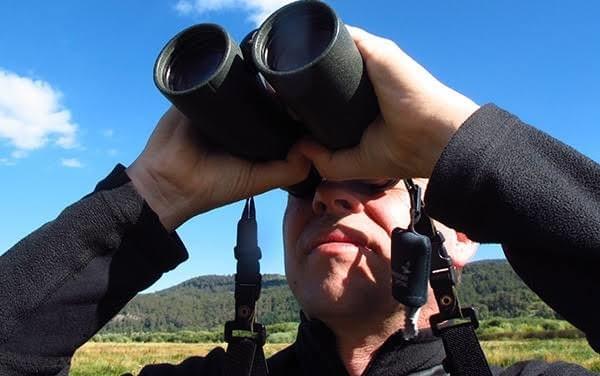The binoculars point out to be everywhere today. Miniature, pocket binoculars can be had for $15 or $20, which is an astonishing value point when you stop to considering how many lenses and prisms are in them. And though these may be fully acceptable for quick views of the irregular bird or squirrels, the sheer physics of their limited light collection make them invalid for usage in astronomy. Once you have buy a decent pair of star watching binoculars, you’ll perhaps, never want to stop using them. Like many avid astronomers, no thing how large your hoard of telescopes get, you will constantly want to keep a pair of binoculars at the ready. For the better experience, you will need to choose the best small binoculars actually designed for astronomy. This section describes the most important feature of binoculars. Understanding these issues allow you to choose a suitable binoculars for astronomy that fits your budget.

How to Choose Binoculars for Astronomy
Magnification and Aperture
Binoculars are assigned by their magnification and gap. For instance, a 7X50 binocular amplifies objects multiple times and has 50mm target focal points. The measure of amplification a binocular gives is significant, yet the size of the target focal points is considerably progressively significant on the grounds that it decides how much light the binocular gathers.
Magnification
Amplification, likewise called power, is indicated by a number pursued by "X" and depicts the measure of direct picture extension given by the binocular. For instance, a 7X binocular causes an article to seem multiple times bigger (or, on the other hand, multiple times nearer) than if that item were seen with the unaided eye.
Aperture
Binoculars are accessible with amplifications extending from 4X to 20X or more in "monster" models. For hand-held binocular astronomy.
Gap is the breadth of the target focal points of the binocular, the huge focal points at the front of the instrument (the end you don't investigate). Bigger gaps gather more light than littler openings, in a sum relative to the square of their diameters.
Field of view
Field of view (FoV) measures the precise scope of the picture obvious in the binocular eyepieces. FoV is controlled by the optical structure of the binocular, including its central length and the sort of eyepieces utilized. FoV might be indicated in two different ways.
Prism type
Binoculars use crystals to exhibit a right picture see, right-side up and not switched left-to-right. Two sorts of crystal are ordinarily utilized, Porro crystals and rooftop prisms.Ironically, despite the fact that rooftop crystals are commonly viewed as "better" than Porro crystals, we consider rooftop crystal binoculars not exactly perfect for galactic use.